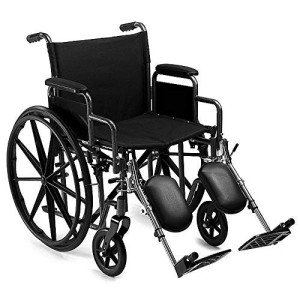Ten Easy Steps To Launch Your Own Bariatric Wheelchair 24 Inch Seat Business

Bariatric Wheelchair Seat Width
Seat Width
Having the correct seat width is essential to wheelchair users who spend longer periods in their chairs. see it here will trigger pressure on the hips and thighs which might cause sores or pressure points. Having too large a seat can also make it hard for the user to reach the hand rims to propel themselves or maneuver in little areas.
To measure the appropriate seat width a person would sit on a chair typically and have their measurement taken throughout their lap at the largest point which is usually their hips. A wheelchair determining tape can be used to determine this, however a backyard stick is preferred as it prevents individuals from wrapping the tape around their hips which would offer an inaccurate result.
The standard wheelchair seat width is 16" (narrow adult), 18" (standard adult), and 20" (broad adult). For bariatric clients, a 24" seat is readily available. This heavy-duty extra broad bariatric wheelchair from Medline features swing-away footrests, a carbon steel frame with rust- and chip-resistant chrome plating, and easy-to-clean vinyl upholstery. It has a weight capacity of 500 pounds.

Seat Depth
Generally, the seat depth of a bariatric wheelchair was added 2" to the measurement taken at the user's largest point (usually their hips). This was suggested to accommodate extra layers of clothing that might be used throughout cold weather. Nevertheless, this practice is ending up being less typical as wheelchair users have the ability to spend more time indoors and are not using long coats. try this web-site makes the seat depth of a chair less crucial when choosing a bariatric wheelchair. However, it is still important to pick an option that offers appropriate support for larger users.
The Medline folding additional broad bariatric manual wheelchair features a comfortable 24" seat width and a durable slide tube silver vein frame. It also has an adjustable axle and tool-free raising legrests.
Seat Height
When it concerns identifying the appropriate wheelchair seat width you need to constantly determine from the user's widest point which is usually their hips. You will likewise need to think about whether the user is going to be wearing a winter season coat as this might include 2" to the width needed.
When a wheelchair remains in usage it should just be run on level surface areas with the wheel locks completely engaged. This is to avoid the chair from being able to move slopes that are 10 degrees or greater. It is also crucial to keep in mind that any activity that might move the center of mass in the chair ought to be done with care. This consists of grabbing products that need the person to lean out of their seat or attempting to stand up from it.
Whenever you have the chair in usage it is advised that you frequently examine it for damage and lube any locations that are deemed essential. For instance, the casters need to be lubricated by getting rid of the caster fork and using a multi-purpose grease to apply to the caster stem bearings. Also, the foot plates can be changed by loosening up the bolt and after that moving them to the wanted position. This enables the feet to sit comfortably on the footplate and prevents any pressure points from forming. This can be extremely uncomfortable for the user and if left unattended, can lead to push sores.
Weight Capacity
Bariatric wheelchairs are designed to support more weight than standard wheelchairs. This makes them sturdier and better geared up to deal with falls. They are also usually larger and broader, making them less maneuverable in tight areas than basic wheelchairs. They require lorries with special ramps and lifts to load them, as well as drivers who know how to finest transport them from one location to the next.
When picking a wheelchair, consider its weight capacity as it will be the primary determining factor in whether it will accommodate your guest's requirements. The weight capacity of the chair is frequently noted as a fixed load, indicating that it indicates the amount of weight the chair can comfortably hold while standing still. However, some manufacturers likewise note an active load that is based upon a drop test and can replicate the result of somebody sitting down in the chair. This may be a more reputable measurement of the weight limit, depending on your requirements.
If you plan to carry out activities that move your center of mass in the seat (such as reaching for items), make sure to have front casters pointed in a forward direction and wheel locks engaged so the chair will not tip over. Also, check that casters are lubricated routinely to prevent extreme wear and abrasions. The lubrication procedure includes getting rid of the fork, separating the caster from the wheel, and greasing the caster stem bearings with premium multi-purpose grease.
